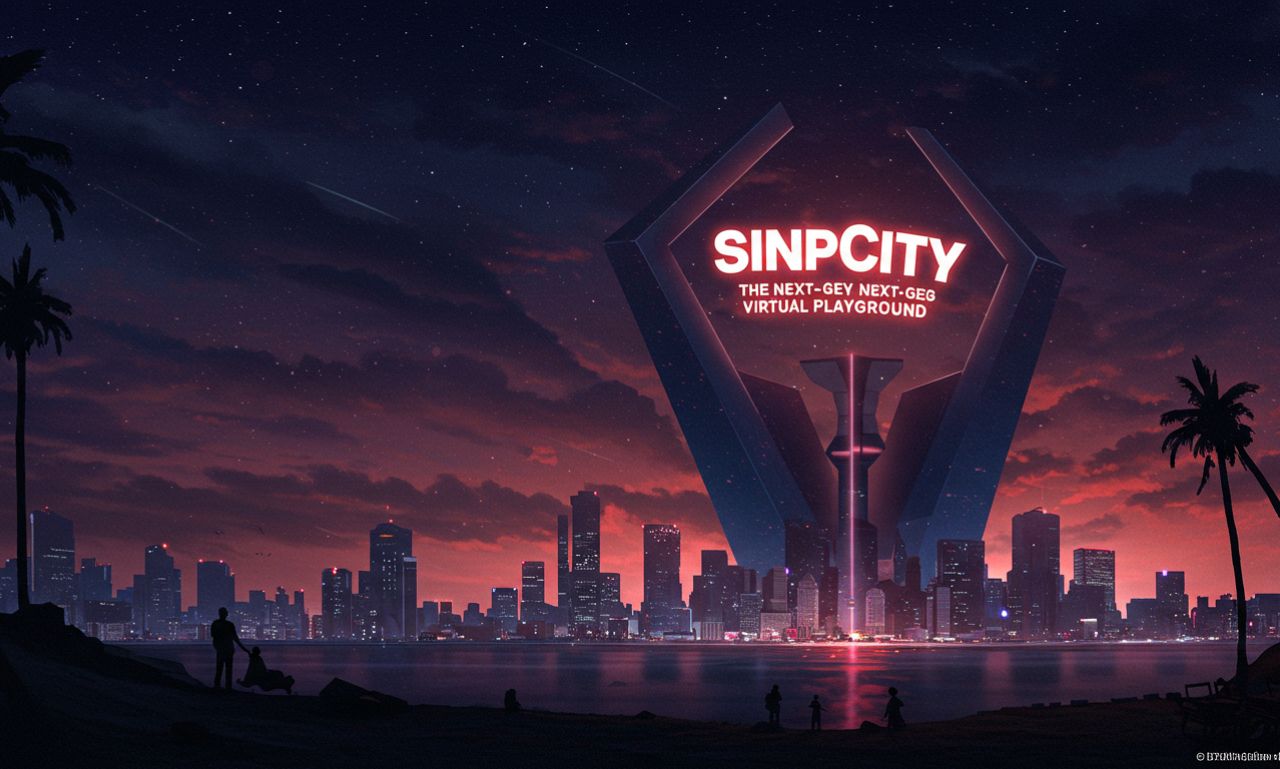Blog
Drive Social Media Lawsuit

In today’s digital world, social media has become an essential part of our daily lives. It’s a platform where users interact, share opinions, and build communities. However, as much as social media provides numerous benefits, it also raises several challenges, especially when it comes to legal concerns. With the rise in online interactions, there has been an increasing number of social media lawsuits. These cases often revolve around defamation, harassment, privacy violations, and more. If you’re involved in a social media lawsuit, or you’re looking to understand how to drive such a case, it’s crucial to know the steps and strategies involved.
In this article, we will delve into the concept of driving a social media lawsuit, providing a comprehensive guide on the various legal aspects to consider, and how you can effectively pursue such a case while being mindful of the digital landscape.
What is a Social Media Lawsuit?
A social media lawsuit refers to legal action taken by individuals, companies, or institutions in response to harmful or illegal activity that occurs on social media platforms. This could involve defamation, harassment, infringement of intellectual property, privacy violations, or even cyberbullying. Given that social media allows for the rapid dissemination of content, issues such as misinformation, cyberstalking, and online harassment have led to an increase in lawsuits.
Understanding the nature of social media lawsuits is crucial because it enables individuals and organizations to better protect their rights online. While social media provides a space for free expression, there are boundaries to this freedom, and these boundaries can sometimes result in legal disputes.
Types of Social Media Lawsuits
Social media lawsuits can take various forms depending on the nature of the dispute. The most common types include:
-
Defamation Lawsuits:
One of the most common reasons people file lawsuits related to social media is defamation. Defamation occurs when false statements are made that damage a person’s reputation. On platforms like Twitter, Facebook, and Instagram, defamatory comments can spread quickly and cause significant harm. Legal action is often taken to seek redress for the damage done. -
Harassment and Cyberbullying Cases:
Harassment and cyberbullying are unfortunately prevalent on social media. When an individual or group is targeted with harmful, offensive, or threatening messages online, legal action can be taken. Such cases often involve law enforcement and online platforms to track down perpetrators. -
Privacy Violations:
Social media platforms often collect and share personal information. In some cases, users’ privacy is violated by unauthorized sharing or breaches of security. If personal data is misused or exposed without consent, a lawsuit may be filed for damages. -
Copyright Infringement and Trademark Violation:
Social media is often used to promote intellectual property, but it can also lead to cases of unauthorized use of copyrighted material or trademarks. This can include music, photos, videos, or other creative content being shared without permission. Legal action can be taken to protect intellectual property rights. -
Employment-Related Disputes:
Employees or employers might find themselves entangled in social media lawsuits due to posts that affect the workplace. For instance, an employee might be fired for controversial posts, or a company may face a lawsuit for wrongful termination based on personal opinions expressed online.
Why Social Media Lawsuits Are on the Rise
The rapid rise of social media has not been matched with an equally swift understanding of its legal implications. Social media platforms offer an environment where individuals can easily share their thoughts and opinions with a wide audience. However, these platforms also have their drawbacks, such as:
-
Anonymity:
Many individuals act inappropriately online because they believe they are anonymous. This anonymity can lead to harmful behaviors like cyberbullying, harassment, and defamation. -
Virality:
Social media content can spread rapidly, often without context or verification. When false or damaging information is shared widely, the effects can be long-lasting and may require legal action to resolve. -
Lack of Regulation:
Social media platforms operate on a global scale, with different laws in different countries. The lack of a uniform regulatory framework makes it difficult to address legal concerns consistently. This inconsistency often leads to confusion and legal disputes.
How to Drive a Social Media Lawsuit
Driving a social media lawsuit involves several critical steps. While every case is different, these general steps can guide individuals or organizations looking to pursue legal action:
-
Identify the Harmful Content:
The first step is to identify the specific content that caused harm. Whether it’s a defamatory post, harassment, or privacy invasion, it’s essential to gather evidence such as screenshots, URLs, and timestamps. This information will be critical in presenting your case. -
Consult a Lawyer Specializing in Internet Law:
Social media lawsuits can be complex, involving different jurisdictions and laws related to online behavior. It’s important to consult with a lawyer who specializes in internet law, defamation, privacy laws, or intellectual property. They can provide advice on how to proceed and the likelihood of success. -
Contact the Social Media Platform:
Many social media platforms have procedures in place for reporting abusive or harmful content. You can often file a complaint with the platform, requesting the content be removed. However, this may not always be effective, especially if the platform does not take action. -
Consider the Jurisdiction:
Since social media platforms are global, determining the jurisdiction for a lawsuit can be tricky. The location of the defendant, the platform, or where the harm occurred might influence which legal system applies. This is an important consideration for legal professionals. -
File the Lawsuit:
If the matter cannot be resolved through informal channels or by reporting to the platform, filing a lawsuit may be the next step. The lawsuit may involve various types of claims such as defamation, harassment, or privacy violations. A legal expert will help craft the appropriate legal documents and present your case in court. -
Prepare for the Trial:
If the case goes to trial, it’s essential to be fully prepared. This includes gathering all relevant evidence, testimonies, and expert witnesses. Many social media lawsuits are settled outside of court, but if yours goes to trial, thorough preparation will be crucial.
Defenses in Social Media Lawsuits
The defendant in a social media lawsuit may present several common defenses:
-
Freedom of Speech:
The defendant may argue that their post was protected under free speech laws, particularly if it was an opinion or commentary. However, free speech does not protect defamatory content or illegal actions. -
Lack of Knowledge:
In cases involving defamation or misinformation, the defendant might claim they were unaware that their post was false or damaging. While this defense may work in some cases, it is often insufficient in social media-related lawsuits. -
Fair Use and Parody:
In cases of intellectual property infringement, the defendant may argue that the content falls under fair use or was a parody. However, these defenses have specific legal criteria that must be met.
Conclusion
Social media lawsuits are becoming increasingly common as more people engage in online activities that can have legal consequences. Whether you’re considering filing a social media lawsuit or defending against one, understanding the legal landscape and steps involved is crucial. With the rise of digital content, it’s essential to be aware of the potential risks and know how to protect your rights effectively. If you’re facing a social media-related legal issue, it’s always best to consult with a lawyer to guide you through the process and determine the best course of action.
Blog
Tarnplanen: Complete Guide with Benefits and Uses

From construction sites to camping trips, protective covers are an essential part of everyday life. One of the most versatile and widely used coverings is tarn-planen. Known for its durability and flexibility, tarnplanen has become a trusted material in industries, households, and outdoor activities. Whether shielding equipment from harsh weather or serving as a makeshift shelter, tarn-planen plays a crucial role in modern living.
In this guide, we will explore tarn-planen in detail, from its history and uses to practical buying tips and future innovations.
Tarnplanen
The term tarn-planen is often used in Scandinavian and German-speaking regions to describe a durable, waterproof tarp or cover. It comes in various sizes and materials, making it adaptable for multiple purposes. Its primary function is protection—from rain, wind, sunlight, and dust.
Unlike ordinary covers, tarn-planen is built with stronger fabrics, often reinforced with coatings for added durability. This makes it ideal for both personal and industrial applications.
History of Tarnplanen
The history of tarn-planen can be traced back to traditional tarpaulins used by sailors centuries ago. Early tarps were made of heavy canvas treated with tar, giving rise to the word “tarpaulin.” Over time, this concept evolved into modern tarnplanen, incorporating synthetic materials like polyethylene and PVC.
Today, tarn-planen reflects a blend of heritage and innovation, offering advanced waterproofing and lightweight properties.
Materials Used in Tarnplanen
Tarn-planen is manufactured using different materials depending on its intended purpose:
-
Polyethylene (PE): Lightweight, affordable, and waterproof.
-
Polyvinyl Chloride (PVC): Heavy-duty, UV-resistant, and long-lasting.
-
Canvas: Breathable, eco-friendly, but less waterproof without treatment.
-
Composite Fabrics: Modern innovations combining strength with flexibility.
Each material has strengths, and the choice depends on whether you need it for home, industrial, or outdoor use.
Manufacturing Process
The production of tarn-planen involves weaving high-density fabrics, coating them with protective layers, and reinforcing edges with grommets for fastening. Advanced methods also include UV treatments and anti-mildew coatings, making tarn-planen suitable for long-term use in harsh conditions.
Common Uses of Tarnplanen
Tarn-planen’s versatility is unmatched. Common uses include:
-
Covering vehicles and equipment
-
Temporary shelters
-
Ground covers at events
-
Protecting goods in storage
-
Emergency repairs
Its adaptability makes it a go-to solution for many industries and households.
Tarnplanen in Construction
On construction sites, tarn-planen is indispensable. It covers unfinished structures, protects building materials, and shields workers from weather conditions. Contractors rely on tarn-planen to maintain work efficiency despite environmental challenges.
Tarnplanen for Outdoor Activities
Adventurers and nature lovers appreciate tarn-planen for its practicality. Campers use it as a rainfly, hikers as ground sheets, and sports enthusiasts as shelter during events. Its portability makes it an essential item for outdoor kits.
Tarnplanen in Agriculture
Farmers use tarn-planen to protect harvested crops, machinery, and even livestock shelters. By shielding against sun, rain, and pests, it prevents losses and extends the lifespan of farming equipment.
Tarnplanen in Transportation
Transport companies frequently use tarn-planen to cover goods on trucks, ships, and rail. These covers ensure products remain safe during transit, reducing damage risks from weather exposure.
Tarnplanen in Military Use
Interestingly, tarn-planen also has military applications. Camouflage-colored variants are used for concealing equipment, creating temporary bases, and protecting supplies. The durability of tarn-planen makes it reliable even under extreme conditions.
Tarnplanen for Home Use
Households use tarn-planen in multiple ways:
-
Covering outdoor furniture
-
Protecting gardens during storms
-
DIY repair projects
-
Temporary storage solutions
It is affordable and easy to use, making it a favorite for homeowners.
Benefits of Tarnplanen
Why is tarn-planen so popular? Its benefits include:
-
Durability: Strong materials withstand wear and tear.
-
Waterproofing: Keeps everything dry.
-
Affordability: Cost-effective compared to permanent structures.
-
Versatility: Useful across industries and households.
Waterproof Features of Tarnplanen
One of the biggest advantages is waterproofing. Tarn-planen is designed to resist rain, snow, and moisture. High-quality versions even prevent mildew buildup, ensuring long-term protection.
Tarnplanen vs Regular Tarps
While often confused with generic tarps, tarnplanen offers higher quality and durability. Standard tarps may tear easily, but tarn-planen’s reinforced design makes it more reliable for heavy-duty applications.
Tarnplanen Sizes and Variations
Tarn-planen comes in sizes ranging from small (2×3 meters) to massive industrial covers (over 20×30 meters). Variations include lightweight camping versions, heavy-duty industrial covers, and camouflage military tarps.
Maintenance Tips for Tarnplanen
To extend its lifespan:
-
Clean with mild soap and water.
-
Avoid sharp objects that may puncture it.
-
Store in a dry, cool place when not in use.
-
Check grommets and seams regularly.
With proper care, tarnplanen can last for years.
Environmental Impact of Tarnplanen
Most tarn-planen is made from synthetic materials, raising concerns about sustainability. However, eco-friendly innovations now include recyclable fabrics and biodegradable coatings. Manufacturers are working toward greener alternatives.
How to Choose the Best Tarnplanen
When buying tarn-planen, consider:
-
Material strength (PE, PVC, canvas)
-
Size and thickness
-
Weather resistance (UV, waterproofing)
-
Purpose (construction, home, outdoor)
-
Price vs durability
A balance of these factors ensures you pick the right tarn-planen for your needs.
Cost of Tarnplanen
Prices vary depending on size and material. Lightweight versions can cost under $20, while heavy-duty industrial ones may reach hundreds of dollars. Still, tarnplanen remains one of the most cost-effective protective solutions.
Tarnplanen in Different Countries
In Germany and Scandinavia, tarn-planen is widely recognized for industrial and household use. In the U.S., it is simply known as a tarp but serves the same purpose. Its popularity spans globally, showing its universal importance.
Innovations in Tarnplanen
Recent innovations include flame-retardant tarps, breathable waterproof fabrics, and smart tarps with solar panels. These advancements make tarn-planen more functional than ever before.
DIY Projects with Tarnplanen
Creative individuals use tarn-planen for:
-
Backyard tents
-
Greenhouse covers
-
Pool protection
-
Temporary garages
It’s not just functional—it’s a DIY-friendly tool.
Challenges in Tarnplanen Industry
The industry faces challenges like counterfeit products, environmental concerns, and fluctuating raw material costs. However, increased demand for eco-friendly and durable covers is pushing innovation forward.
Future of Tarnplanen
Looking ahead, tar-nplanen will likely include more sustainable materials, smart technologies, and customizable options. Its role in industries, households, and outdoor lifestyles will only grow stronger.
Conclusion
The story of tarn planen is one of practicality, versatility, and innovation. From humble beginnings as tar-coated canvas to today’s high-tech fabrics, it has evolved into an indispensable part of daily life. Whether in construction, agriculture, transport, or camping, t arnplanen proves that sometimes the simplest solutions are the most powerful.
Blog
ZVideo: The Future of Online Video Streaming and Content Creation

In the ever-evolving landscape of digital media, video content continues to dominate. With YouTube, TikTok, Instagram Reels, and countless other platforms fighting for viewers’ attention, a new player has emerged — ZVideo. This innovative platform is quickly gaining traction, offering a fresh, dynamic, and creator-friendly space that merges entertainment, education, and monetization in unique ways.
In this comprehensive guide, we’ll explore what ZVideo is, how it works, what sets it apart, and why it could be the future of online video content. Whether you’re a content creator, marketer, or casual viewer, ZVideo is a platform worth knowing about.
What is ZVideo?
ZVideo is a next-generation video-sharing platform designed to empower content creators while delivering a seamless viewing experience to users. Unlike traditional platforms, ZVideo combines short-form and long-form content with advanced algorithms and creator-centric tools to encourage growth, discovery, and monetization.
Key Features of Z-Video:
-
Multi-format Support: Upload short clips, vlogs, documentaries, tutorials, and livestreams.
-
Advanced AI Recommendations: Personalized content feeds that actually reflect user interest.
-
Monetization Tools: Multiple ways to earn, including ad revenue, tips, subscriptions, and NFTs.
-
Creator-Friendly Policies: Transparent rules and faster payouts.
-
Cross-Platform Sharing: Seamless integration with other social platforms like Twitter, Instagram, and Discord.
The Rise of Z-Video: Why It Matters
ZVideo didn’t just show up out of nowhere. It was born from the growing frustration among creators with legacy platforms that often demonetize content, suppress organic reach, or change algorithms without warning.
ZVideo is the answer to three major problems:
-
Creator Burnout
-
Traditional platforms often favor quantity over quality.
-
ZVideo encourages meaningful engagement over mindless scrolling.
-
-
Monetization Inequality
-
Many creators struggle to earn a fair share of ad revenue.
-
ZVideo offers equitable revenue sharing, brand partnerships, and community tipping.
-
-
Content Discovery Issues
-
Algorithms often favor already-popular creators.
-
ZVideo’s AI focuses on niche interests and viewer behavior, giving new creators a chance.
-
How Z-Video Works
ZVideo operates on a sleek, user-friendly interface that appeals to both viewers and content producers. Here’s how it functions:
1. Content Creation
Creators can film and upload directly from mobile or desktop. The in-app editing tools are intuitive, with features like auto-captioning, green screen effects, royalty-free music, and filters.
2. Publishing and Sharing
Once published, videos can be instantly shared across social media platforms with one click. Users can schedule releases, create premieres, and even set pay-per-view pricing for exclusive content.
3. AI-Powered Discovery
ZVideo uses a sophisticated recommendation engine that doesn’t just rely on views and likes. It considers:
-
Watch time
-
Viewer interactions
-
Completion rates
-
Community tags
-
Niche relevance
This helps viewers discover content that truly resonates with their interests.
4. Earnings and Monetization
ZVideo supports multiple revenue streams:
-
Ad Revenue Split: Transparent 70/30 split in favor of creators.
-
Fan Subscriptions: Monthly memberships for exclusive content.
-
Live Tips & Super Chat: Earn in real-time during livestreams.
-
NFT Integration: Turn videos into digital collectibles.
-
Brand Collaborations: Integrated brand deal marketplace.
Why Creators are Switching to Z-Video
Content creators are the backbone of any video platform. ZVideo understands this and has built its system to nurture, support, and reward them. Here’s why creators are making the switch:
1. Better Monetization
Many creators report earning more on ZVideo than on YouTube or TikTok, thanks to multiple income streams and faster payouts.
2. Higher Engagement
Because of personalized recommendations, smaller channels often report 2–3x higher organic reach compared to other platforms.
3. Community Building
ZVideo includes tools like creator forums, direct messaging, and community hubs, allowing creators to build deeper relationships with fans.
4. Transparency and Support
A dedicated support team, transparent algorithm updates, and creator-first policies help build trust — something many feel is lacking elsewhere.
ZVideo for Marketers and Brands
ZVideo isn’t just for content creators. Brands and marketers are leveraging the platform to connect with audiences in more authentic ways.
Benefits for Marketers:
-
Targeted Advertising: Ads are shown based on actual behavior, not just demographics.
-
Influencer Marketplace: Discover and collaborate with micro and macro influencers.
-
Branded Content Tools: Create native video ads or sponsor creator content.
Case Study:
A health and fitness brand launched a short-form video campaign on ZVideo and saw a 34% higher engagement rate compared to Instagram Reels, largely due to niche targeting and less ad fatigue.
SEO and Z-Video: A Winning Combo
If you’re a content creator or brand looking to improve online visibility, ZVideo offers significant SEO benefits:
1. Indexed Video Pages
Each ZVideo upload generates a unique, indexable page optimized for search engines.
2. Rich Snippets
ZVideo supports schema markup, making your video appear as a rich result in Google — complete with thumbnail, duration, and description.
3. Cross-Linking and Backlinks
You can add links to your website, blog, or product pages directly in video descriptions.
4. High Dwell Time
Since the content is engaging and personalized, viewers spend more time on ZVideo pages, which positively affects search engine rankings.
How to Get Started on Z-Video
Getting started is quick and easy:
Step-by-Step Guide:
-
Sign Up: Create a free account at ZVideo.com or via the mobile app.
-
Set Up Your Profile: Add a profile picture, bio, and links.
-
Upload Your First Video: Use built-in editing tools or upload from your library.
-
Engage with the Community: Comment, like, and collaborate.
-
Monetize: Turn on monetization and explore subscription or tipping options.
Pro Tips:
-
Optimize titles with keywords (e.g., “how to,” “top 5,” “review”).
-
Use compelling thumbnails.
-
Add CTAs (Calls to Action) like “Subscribe” or “Click the link below.”
-
Upload consistently — once a week is a good starting point.
Z-Video vs. YouTube vs. TikTok
ZVideo bridges the gap between the flexibility of YouTube and the virality of TikTok — all while keeping creators at the center.
The Future of ZVideo
ZVideo isn’t just another trend — it’s a platform built on strong fundamentals:
-
Sustainable Monetization
-
Creator Autonomy
-
Community-Driven Development
-
Cutting-Edge Technology
With upcoming features like AI-generated captions in 50+ languages, AR video tools, and decentralized storage, ZVideo is positioning itself as a major player in the content economy.
Final Thoughts
As the digital world continues to prioritize video content, platforms like ZVideo are not just refreshing alternatives — they’re shaping the future of content creation. Whether you’re a creator looking for better tools, a brand seeking deeper engagement, or a viewer hungry for meaningful content, ZVideo offers something unique, innovative, and exciting.
Join the revolution. Create. Watch. Earn. Only on ZVideo.
Blog
SinpCity: The Next-Gen Virtual Playground

In today’s digital renaissance, SinpCity emerges as a revolutionary platform that redefines how we game, connect, and create. More than just another online space, SinpCity blends immersive virtual worlds, social interaction, creative tools, and robust monetization—ushering in a new era of participatory entertainment. Whether you’re a gamer, creator, small‑business entrepreneur, or social butterfly, SinpCity promises a tailored experience driven by innovation and community energy.
1. What Is SinpCity?
SinpCity is a multifaceted virtual ecosystem that seamlessly integrates:
-
Immersive environments: Highly customizable virtual worlds—from neon‑drenched cities to serene natural landscapes—designed for exploration and socializing
-
Game creation tools: Powerful building engines enable users to craft games, missions, puzzles, and full interactive environments
-
Social hubs: In‑platform social networks, guild features, chat rooms, virtual events, and global meetups .
-
Digital marketplace: A thriving ecosystem where creators can sell virtual real estate, art, game assets, and more—complete with monetization and ownership tools
-
Security & transparency: Built‑in tech safeguards user data, ensures content control, and provides fair revenue splits for creators .
2. Core Features of SinpCity
Virtual World Experiences
SinpCity immerses users in dynamic, visually rich environments—from cyberpunk cityscapes to fantasy worlds—alive with NPCs, events, and interactive storytelling .
Game Creation & Tools
Part platform, part game engine, SinpCity allows builders to script world events, design missions, and build engaging user experiences. Think user‑generated adventures à la Roblox or Minecraft, but with meta capabilities and personalization .
Integrated Social Features
Robust chat systems, guild/forums, and real‑time events foster a GDPR‑like sense of belonging; players gather in themed zones or attend live virtual concerts and shows .
Marketplace & Monetization
Creators can sell digital goods—land tech, avatars, game assets—leveraging NFT‑style ownership in native or blockchain‑like formats. SinpCity supports transparent monetization, helping small businesses and creators thrive
Security & Fairness
Privacy and creator rights are prioritized. SinpCity’s back end ensures user data protection and fair revenue sharing. Every creator retains IP control while benefiting from monetization structures 3. Who’s SinpCity For?
Gamers
Casual to hardcore gamers: enjoy solo questing or engage in live‑action missions and group challenges.
Creatives & Developers
Aspiring world‑builders, game devs, and virtual artists use SinpCity’s tools to craft portfolio pieces—and even sell them.
Entrepreneurs & Small Businesses
Sell virtual wares—fashion, property, utility items—in an ecosystem that supports branding, analytics, and commerce.
Learners & Educators
Potential for educational modules: simulations, puzzles, STEM games—beauty with purpose .
Social Enthusiasts
Hosts concerts, meetups, gallery openings—ideal for communities wanting immersive social environments.
4. How SinpCity Stands Apart
-
Holistic design: Combines gameplay, social engagement, and commerce in one unified space—unlike single‑focus platforms
-
Creator-first ethos: Transparent monetization and IP control ensure fair treatment of talent
-
Cross-platform accessibility: Available across PC, consoles, and mobile—allowing seamless play wherever you are
-
Safety & security: While community‑driven, SinpCity incorporates moderation, privacy safeguards, and dispute‑resolution tools
5. Notable Use‑Cases
Aspiring Game Maker
Build levels or minigames—market them to players and earn through a revenue share system.
Virtual Event Host
Organize a concert, art show, or lecture—form virtual gatherings with ticket sales managed natively.
Digital Real Estate Owner
Buy a virtual plot, develop it (e.g., gallery, puzzle park), rent or monetize in ‑platform tokens.
Educator or Trainer
Design simulations for STEM education or language learning—invite student groups for interactive lessons.
6. Early Insights & Community Feedback
Early media coverage paints SinpCity as a “mystery‑wrapped gem”, blending virtual real estate speculation, game-building, and social engines
Blog reviews highlight how SinpCity allows users to “become creators”, leveraging user-generated content and community features .
Experts commend its sleek UI, and commitment to creator autonomy and monetization fairness—key differentiators in crowded virtual spaces .
7. How to Get Started
-
Sign up on the SinpCity website.
-
Download the app for your device.
-
Create your avatar using robust editors.
-
Explore worlds—join missions, socialize, discover.
-
Use Creator Mode: start building—territories, games, items.
-
Monetize: list creations on the marketplace or go freemium.
-
Engage: organize events, teach sessions, or network.
8. SEO Keywords & Visibility Strategy
To ensure SEO strength, this article integrates the following keywords naturally:
-
SinpCity platform
-
SinpCity virtual world
-
SinpCity game creation tools
-
SinpCity social platform
-
SinpCity marketplace monetization
-
SinpCity immersive experience
-
SinpCity creators
-
SinpCity review
Each section uses keyword‑rich headings and repeats naturally (without stuffing) to help search engines rank high for user queries.
9. Comparison: SinpCity vs Roblox, Minecraft, Second Life
| Feature | SinpCity | Roblox / Minecraft | Second Life |
|---|---|---|---|
| World creation | Full scripting + virtual assets + marketplace | Templates + Lua (Roblox), blocks only (Minecraft) | Emphasis on virtual life, less on gameplay |
| Monetization | Integrated marketplace, transparent creator revenue | Dev‑exchange (Robux), but limited ownership | Linden Dollars; creators lack scriptable fairness |
| Social tools | Chat, forums, events heavily built‑in | Chat + groups, events are third‑party | Highly social, but UI is dated |
| Cross‑platform | Full support: PC, mobile, console | Varies (mostly PC/mobile for Roblox) | PC only, less console support |
SinpCity combines best elements: gaming tools, social features, marketplace—positioning itself at the intersection of all three.
10. Challenges & Considerations
-
Scalability: As popularity grows, real-time performance may suffer—developers need to optimize servers.
-
Curation & moderation: User‑generated content demands proactive oversight to avoid abuse.
-
Monetization ethics: Platforms must manage commercial behavior to prevent exploitative practices.
-
Onboarding complexity: New users might find advanced tools overwhelming initially.
11. The Road Ahead for SinpCity
Platform Roadmap
Expected near‑term developments include:
-
VR support and deeper metaverse integration
-
AI driven world‑building and NPC generation
-
Enhanced creator funds or grants
-
Third‑party integrations: blockchain, e‑commerce, identity
Ecosystem Growth
User attraction is organic—appealing to gamers, builders, educators, creatives, and brands. Ecosystem strength depends on creator retention, platform stability, and user‑friendly UX.
Measuring Success
Metrics will include:
-
Active user count, creator quantity
-
Marketplace volume and revenue
-
Event attendance
-
Cross‑platform usage data
These insights will guide development resources and platform direction.
12. Final Thoughts
SinpCity stands out as an elegant convergence of virtual worlds, creative autonomy, social engagement, and monetization. It answers core demands of modern digital users: immersive experiences, expressive agency, financial opportunity, and communal connection.
For creators, it opens pathways to earn via their ideas. For users, it delivers infinite exploration. And for educators and brands, it offers new formats for interaction. As creators continue to build, play, socialize, and sell, SinpCity has the potential to shape the next frontier of virtual ecosystems.
Curious? Jump in—explore a world where you’re not just a player, but a creator, entrepreneur, educator, and community leader. SinpCity isn’t a future concept; it’s present-day innovation in full swing.
-

 Arts & Design2 years ago
Arts & Design2 years agoArtofzoo: Where Wildlife Meets Creativity
-

 Technology8 months ago
Technology8 months agoPcode Com NG: Features and Functionality Explained
-

 general8 months ago
general8 months agoInfluencersGinewUld | Empowering Content Creators to Thrive
-

 Blog11 months ago
Blog11 months agoRosewellsk: Unveiling the Secrets of Modern Living Bliss
-

 Technology2 years ago
Technology2 years agoDepomin82: Redefining Standards in Performance and Innovation
-

 home improvement11 months ago
home improvement11 months agoExploring the Allure of Duck Egg Blue: A Color Trend for Every Home
-

 Technology11 months ago
Technology11 months agoAms39K: A Comprehensive Overview
-

 Blog11 months ago
Blog11 months agoLillienu: Revolutionary Solutions to Simplify Modern Living Today
